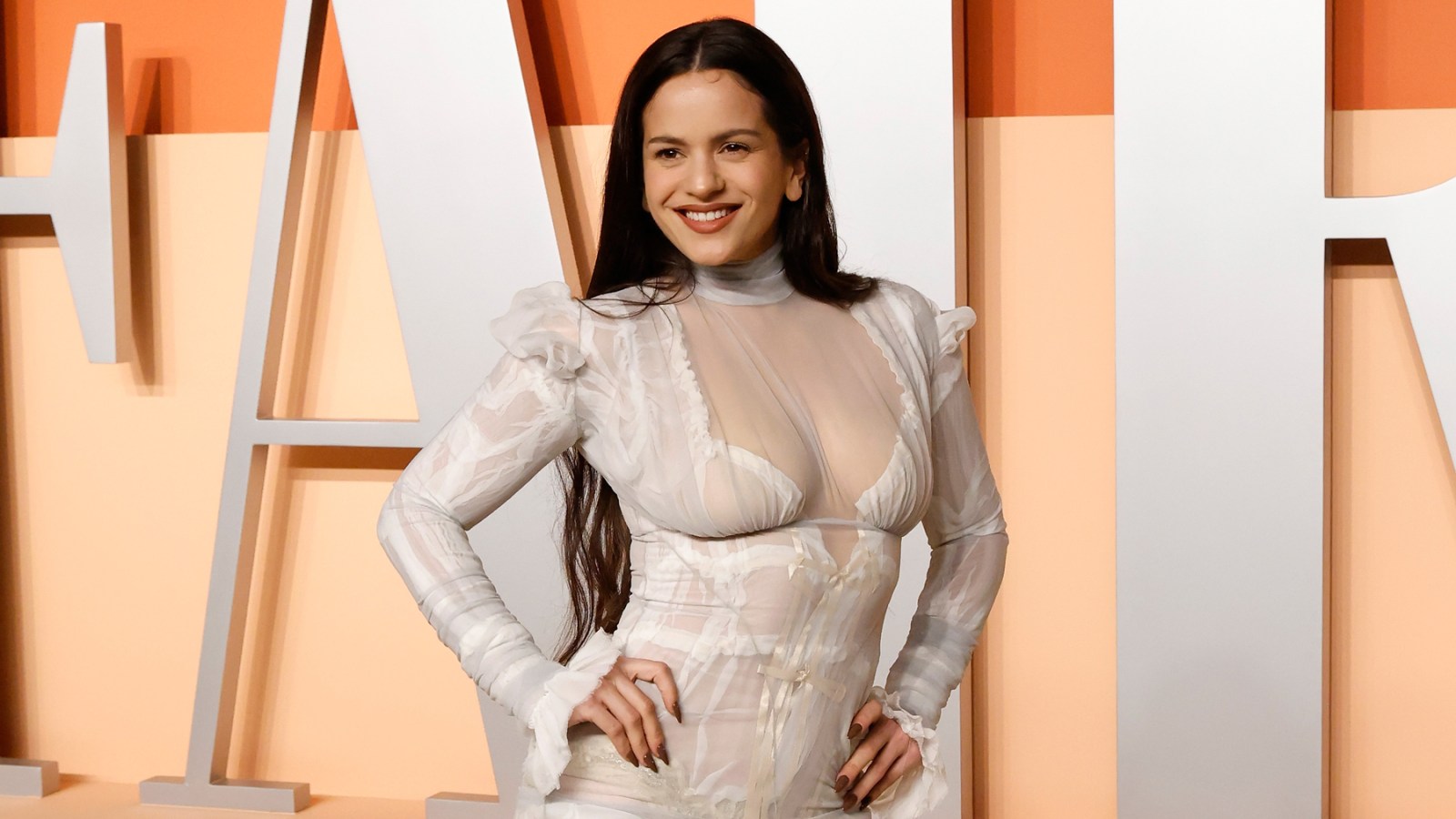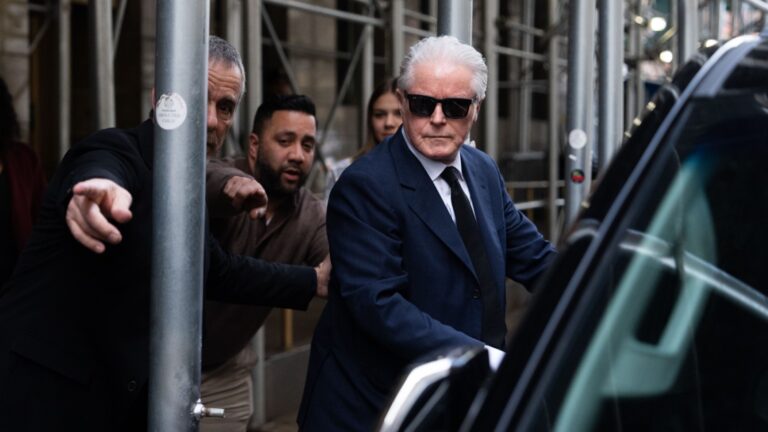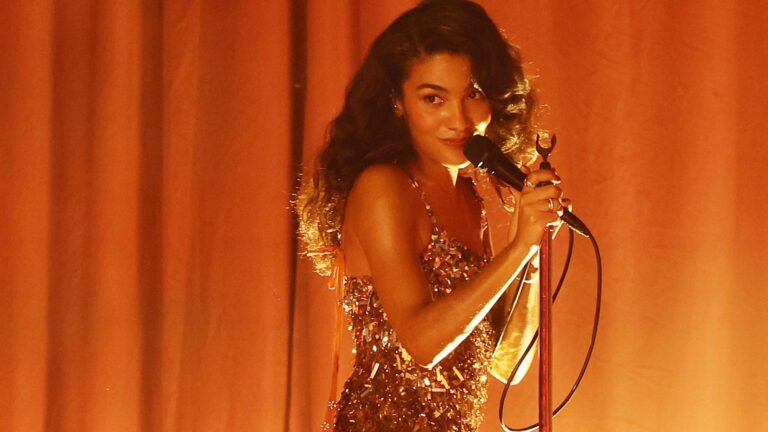Rosalía’s album Lux already feels like it’s broken boundaries in music with its blend of languages, orchestral arrangements, and classical influences. It’s a transformative piece of work, one that sounds luxurious and complete — and part of that is because the people on the record were operating at the top of their game.
Rosalía enlisted producers like Noah Goldstein and Dylan Wiggins to help execute her vision, and the team made sure to pull in an even longer list of accomplished collaborators. Icelandic conductor Daníel Bjarnason was brought in to lead the London Symphony Orchestra, featured on every song, and to serves as an executive producer; his past credits include work with Sigur Rós and his own debut album, Processions, from 2010. Kyle Daniel Gordon, known for the Oppenheimer and Bridgerton soundtracks, was given the job of orchestrations. Meanwhile, artists like Yahritza from the Yakima family band Yahritza y Su Esencia and the Portuguese luminary Carminho are among featured performers, who also include Björk and Yves Tumor.
Below, Carminho, Yahritza, Bjarnason, and Gordon talk about their favorite moments working on the album and what the reception has meant.
Yahritza from Yahritza y Su Esencia (“La Perla”)
The collaboration came together, and it was honestly out of the blue. I was just waking up, and I had gotten a message from my manager saying that Rosalía wanted to collab with us. Man, I had so many emotions right there. I was super, super happy and so in shock that I ran into my brother Mando’s room and I told him, “Rosalía wants to collab with us!” We just started jumping in the air out of happiness.
When I first heard the song, I was amazed. The production was crazy good. Man, let’s not even talk about the lyrics [laughs.] It made me want to sing it to the world. They just speak facts, so I knew so many people were gonna relate to it. And the album overall was a complete masterpiece — the production, the lyrics, the emotion behind it. I truly loved every single song on the album, but if I had to pick one, it would be “La Perla.” Not trying to be biased at all, but I really, really love that song. I just wanted to transmit the lyrics with a lot of emotion and hope that it connects with the heart of the audience.
What I love about Rosalía’s voice is that she shifts you into so many different dimensions and emotions. She’s literally breathtaking. It’s humbling that an artist like Rosalía laid eyes on a small-town group like us — it for sure proved to me that anything is possible when you don’t give up, and we will forever be grateful to Rosalía and our audience for all of the love and support.
Kyle Daniel Gordon (Orchestrator)
I got a call from the London Symphony Orchestra saying that this artist Rosalía was looking for an orchestrator. Within an hour of getting that email, they invited me to their studio here in Los Angeles, where I got to go meet Rose, Noah Goldstein, and everyone else that was working on the project. They had orchestral mock-ups of what they were going for, so I was able to get an idea of the shape of the song that they were looking to achieve.
[For example] with “Berghain,” that song was operatic in its nature. It reminded me of Mozart’s Requiem or Don Giovanni, those old late-1700s operatic pieces. I’m like, ‘OK, I’m going to emulate the sound of those orchestras.’ They had different instruments, different trumpets, different French horns, limited note options. When I wrote that arrangement, I limited the orchestration to what would have been possible in the late 1700s so that it would evoke that sound.
One moment that I love is on “Porcelana.” There’s this bass line where we had a contrabass clarinet, which is this eight-foot-tall clarinet. I remember being in the studio with Noah and I’m like, “I think we need a special woodwind session. We need contrabass clarinet.” I got to sit there and work with them in the studio and watch them fall in love with the sounds that an orchestra could bring. We don’t need 808s on this album. We could just use the contrabass clarinet; we could just use the tuba. The whole thing was kind of a dream: We had the opportunity to just make something for art’s sake, and it also has this mass popularity? What more can you hope for?
Carminho (“Memória”)
I had written “Memória” for my own album, and we had sent it to her team to see if she wanted to be a part of it. When she heard it, she responded back, and she asked a question that I thought was very meaningful: “How important is this song to your project?” And I said, “Very important.” And she said, “Because I’d like it for my album.” And we talked about the meaning and how it fit into the record. And then I made the decision. I was honored that she wanted it and that she felt like it fit into what she was trying to do. A little after that, she asked me if I could sing on it and be part of the song.
When I wrote the song, it’s someone saying, “Do you still remember me? Do you know where I came from? Do you know me?” As the song goes on, you realize the person is having a conversation with themselves. They are asking themselves, “Do I still know myself? Have I changed? Who was I, and who am I?” For me, it was a very powerful message, and I think when you listen to Rosalía’s album, it fits into the story of the album and this journey the album becomes.
In fado music, it’s very common to take a traditional melody and write lyrics for it. The one you hear on “Memoria” is a traditional composition by Armando Machado. To me, it means a lot that she is sharing fado with people on this song. She sings it beautifully. It also becomes an opportunity for people to learn more about this style. [Carminho’s new album, Eu Vou Morrer de Amor ou Resistir, is out now.]
Daníel Bjarnason (Conductor for the London Symphony Orchestra)
I was surprised by how big a part the orchestra played in all of the songs. They were not there as added shine, but they were an integral part. And then there’s just how bold she was in using the orchestra; a good example of that is, of course, “Berghain.” There are these in-your-face, intricate strings and this moment where the orchestra slows down, so it’s taking risks and not being afraid of having the orchestra flex its muscles. If you hear somebody say, “There’s a pop album, and there’s an orchestra,” maybe you’d imagine something a little bit different than what this album is.
They had a rough idea of what they were looking for. But while we were in the studio, Rosalía and Noah were so open-minded about the possibilities and willing to experiment with sound and texture. Rosalía was involved in every single note that was played there and in the best kind of way — very curious, open-minded but also had a clear vision of what she wanted and what she didn’t want. That’s the best kind of artist to work with, I think.
The strings on “Reliquia” sound wonderful. I’m happy about how that turned out. I think a lot of the sort of orchestral climaxes sound really wonderful. “Mio Cristo Piange Diamanti” is maybe my favorite song on the album, at least currently. I love the way the orchestra grows in that song, and also in “Magnolias.” What is beautiful about the album is the way it’s not trying to be something it isn’t. It’s pushing into different directions, but always like through the heart, so to speak. The centrality of each song is the text — the vocals, the expression, and everything else is in service of that. And she’s incorporating the sound of the symphony orchestra where it’s not a straightforward, simple pop arrangement. These are not straightforward pop songs.



